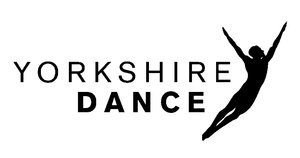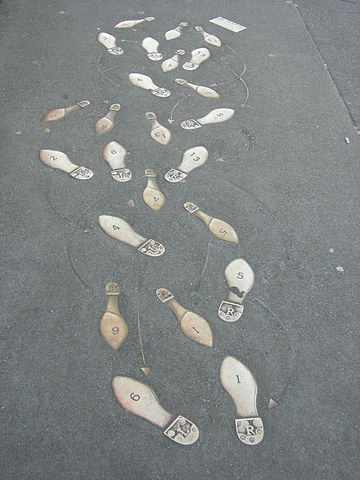 Autumn 2013 will see Sadler’s Wells continue its partnership with The Princes Foundation for Children and the Arts in the delivery of Dance Quest. Dance Quest is a project for the organisations in which 150 young people across the north of the capital will be introduced to live dance and performance. Students from five north London secondary schools will take part in workshops in the aim to make dance more prominent as an art form. This follows the introduction of the project last year, seeing great success.
Autumn 2013 will see Sadler’s Wells continue its partnership with The Princes Foundation for Children and the Arts in the delivery of Dance Quest. Dance Quest is a project for the organisations in which 150 young people across the north of the capital will be introduced to live dance and performance. Students from five north London secondary schools will take part in workshops in the aim to make dance more prominent as an art form. This follows the introduction of the project last year, seeing great success.
Pupils from Broomfield School, Central Foundation Boys’ School, Gladesmore Community School, Holloway School and The Petchey Academy – aged 11-13 – will be eligible to take part in creative workshops led by dancers from Wayne McGregor | Random Dance. Providing young people with an opportunity of this type opens up their perception of dance even further, complemented by their chance to see two dance productions at Sadler’s Wells. For some, this may be their first time in a professional theatre, introducing them to London’s largest dance house.
When Dance Quest was launched last year it was met with a great response. The project is one which is all encompassing, enabling students to get a taste of dance in a unique setting, led by huge talent and aspiration. Dance Quest is a huge opportunity for these students and may even plant the seed of a lifelong interest in dance, perhaps even a profession. For 2013 Dance Quest will culminate in a final sharing in which each group will celebrate their achievements and perform in he Lilian Baylis Studio at Sadler’s Wells. Students will also have the opportunity to gain an Arts Award during the process.

 Swindon school pupils have learnt how to use dance to counter the threat of bullies, taking time out from lessons to learn about bullying through the medium of dance. Students at Holy Rood Junior School were given a talk by Pat O’Driscoll, who runs a local Matt Fiddes martial arts school, about bullying and how to counter it before his daughter Megan led a street dance session. Such a great initiative could be effective rolled out to other mainstream schools across the country.
Swindon school pupils have learnt how to use dance to counter the threat of bullies, taking time out from lessons to learn about bullying through the medium of dance. Students at Holy Rood Junior School were given a talk by Pat O’Driscoll, who runs a local Matt Fiddes martial arts school, about bullying and how to counter it before his daughter Megan led a street dance session. Such a great initiative could be effective rolled out to other mainstream schools across the country. Beginning pointe work is not to be taken lightly or begun before your body is ready: going on pointe before this can cause foot deformities, for example, and other problems later in life. Factors such as age, parental expectations and the students’ desire to go on pointe are not substantial in determining if a student should starting training on pointe, with teachers needing to consider range of movement in the foot and ankle, technical ability and inherent bodily design overall.
Beginning pointe work is not to be taken lightly or begun before your body is ready: going on pointe before this can cause foot deformities, for example, and other problems later in life. Factors such as age, parental expectations and the students’ desire to go on pointe are not substantial in determining if a student should starting training on pointe, with teachers needing to consider range of movement in the foot and ankle, technical ability and inherent bodily design overall. The 2013 Youth Dance Conference, named ‘Dance Insights – working together for the future of dance’, will take place on 20 November at CAST, Doncaster’s new performance venue in Yorkshire. The conference will cover teaching dance, health and wellbeing, and leadership in the context of working with young people on challenging economic times.
The 2013 Youth Dance Conference, named ‘Dance Insights – working together for the future of dance’, will take place on 20 November at CAST, Doncaster’s new performance venue in Yorkshire. The conference will cover teaching dance, health and wellbeing, and leadership in the context of working with young people on challenging economic times. Recent research commissioned by Ticketmaster has revealed that a higher proportion of people went to the theatre last year than attended a music concert or sporting event, with teenagers saying they are more likely to go than older people. Going against teenage stereotypes, the research also goes against theatrical stereotypes in which audiences are middle-class and middle-aged, with the most likely age group to say they will attend the theatre is 16 to 19 year olds, with 45 to 54 year olds least likely to attend.
Recent research commissioned by Ticketmaster has revealed that a higher proportion of people went to the theatre last year than attended a music concert or sporting event, with teenagers saying they are more likely to go than older people. Going against teenage stereotypes, the research also goes against theatrical stereotypes in which audiences are middle-class and middle-aged, with the most likely age group to say they will attend the theatre is 16 to 19 year olds, with 45 to 54 year olds least likely to attend. Former Royal Ballet dancer Xander Parish made his debut as principal in the Mariinsky Ballet’s production of Romeo and Juliet on 18 October in St Petersburg, having been scouted by Artistic Director Yuri Fateyev three years ago. As a British dancer, Parish trained at the Royal Ballet School and consequently joined the Royal Ballet. After five years, in 2010, Parish was invited to join the Mariinsky, with Fateyev sufficiently impressed by Parish’s artistic potential.
Former Royal Ballet dancer Xander Parish made his debut as principal in the Mariinsky Ballet’s production of Romeo and Juliet on 18 October in St Petersburg, having been scouted by Artistic Director Yuri Fateyev three years ago. As a British dancer, Parish trained at the Royal Ballet School and consequently joined the Royal Ballet. After five years, in 2010, Parish was invited to join the Mariinsky, with Fateyev sufficiently impressed by Parish’s artistic potential. Picking up choreography in class or rehearsal can be an arduous task. If, as a dance student, it is something that you struggle with, it can be frustrating and inhibiting to observe peers grasping the movement while you are still worrying about the first eight counts. The movement can have the utmost simplicity, the counts can be clear and you can be familiar with the music, however putting the movements together and remembering them in that order can be a feat.
Picking up choreography in class or rehearsal can be an arduous task. If, as a dance student, it is something that you struggle with, it can be frustrating and inhibiting to observe peers grasping the movement while you are still worrying about the first eight counts. The movement can have the utmost simplicity, the counts can be clear and you can be familiar with the music, however putting the movements together and remembering them in that order can be a feat.